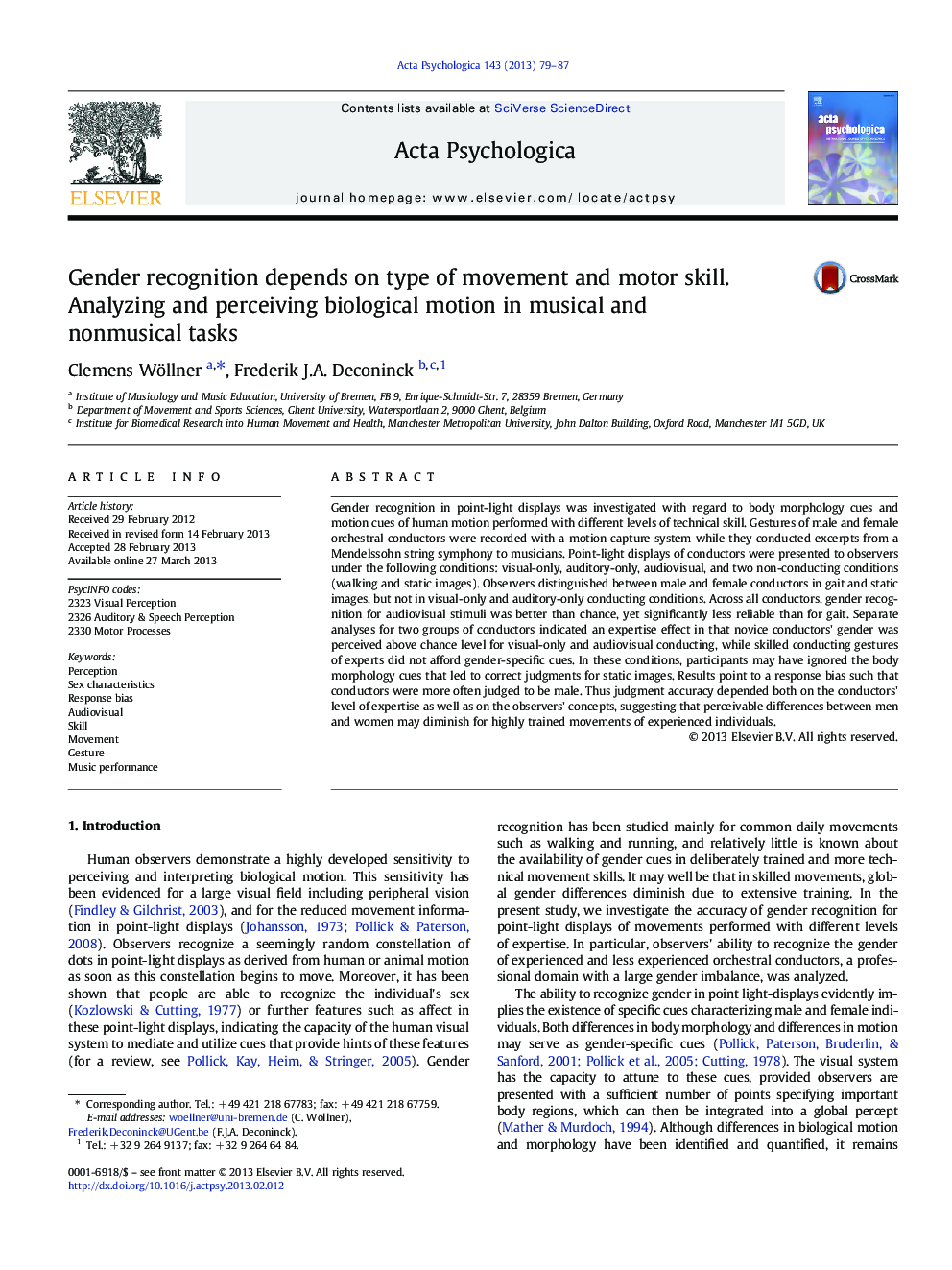| کد مقاله | کد نشریه | سال انتشار | مقاله انگلیسی | نسخه تمام متن |
|---|---|---|---|---|
| 919867 | 920246 | 2013 | 9 صفحه PDF | دانلود رایگان |

• We investigated gender recognition in point-light displays of different movements.
• Gender was only recognized reliably in less-technical movements (i.e. gait).
• For skilled movements, performers’ expertise affected recognition accuracy.
• We analyse the utilization of motion cues and observers’ response biases.
• Consequences for the skill of orchestral conducting are discussed.
Gender recognition in point-light displays was investigated with regard to body morphology cues and motion cues of human motion performed with different levels of technical skill. Gestures of male and female orchestral conductors were recorded with a motion capture system while they conducted excerpts from a Mendelssohn string symphony to musicians. Point-light displays of conductors were presented to observers under the following conditions: visual-only, auditory-only, audiovisual, and two non-conducting conditions (walking and static images). Observers distinguished between male and female conductors in gait and static images, but not in visual-only and auditory-only conducting conditions. Across all conductors, gender recognition for audiovisual stimuli was better than chance, yet significantly less reliable than for gait. Separate analyses for two groups of conductors indicated an expertise effect in that novice conductors' gender was perceived above chance level for visual-only and audiovisual conducting, while skilled conducting gestures of experts did not afford gender-specific cues. In these conditions, participants may have ignored the body morphology cues that led to correct judgments for static images. Results point to a response bias such that conductors were more often judged to be male. Thus judgment accuracy depended both on the conductors' level of expertise as well as on the observers' concepts, suggesting that perceivable differences between men and women may diminish for highly trained movements of experienced individuals.
Journal: Acta Psychologica - Volume 143, Issue 1, May 2013, Pages 79–87